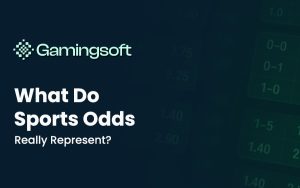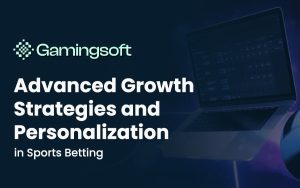The iGaming industry in 2025 is more competitive than ever. Thousands of new brands launch each year, each trying to attract players with irresistible bonuses and slick marketing. But beyond flashy campaigns, the real battle happens after the signup — keeping those players engaged and loyal.
In an increasingly saturated market, operators are beginning to ask: Is it more profitable to chase new players or to retain existing ones?
According to “Understanding Player Engagement Through Social Media Interaction“, loyalty is often born from emotional connection rather than pure incentive. This makes retention not just a marketing tactic, but a business philosophy.
Acquisition Brings Players In — Retention Keeps Them Playing
Every iGaming business starts with acquisition — but only those who master retention thrive in the long run.
Player acquisition refers to attracting new users through advertising, affiliate marketing, influencer partnerships, or sign-up bonuses. It’s essential for early growth and brand awareness.
Player retention, on the other hand, focuses on keeping players active after registration — through personalized communication, loyalty rewards, and continuous engagement.
As explored in “Player Retention and Loyalty Factors in Online Gambling“, retention is closely tied to perceived value and trust. Players stay when they feel recognized and rewarded.
Building a strong balance between the two is what separates a short-lived operator from a lasting brand. You can read more strategic insight in “Key Strategies for Running an iGaming Platform“.
The True Cost of Acquisition — Why It’s Getting Harder
Acquisition has always been the fuel of iGaming growth — but it’s also the most expensive engine to maintain.
Advertising costs are rising across every channel: affiliates demand higher commissions, ad regulations are tightening, and global competition drives CPMs upward. The Journal of Applied Sports Management’s “Cost Efficiency and Marketing in Digital Betting” highlights that customer acquisition costs for gambling brands have doubled in several mature markets since 2022.
Each new player may cost hundreds of dollars to acquire — and many never deposit beyond the first bonus. The result? High marketing spend, low short-term ROI.
This is why top operators now treat acquisition as a precision investment, not a volume game. They rely on smarter segmentation, conversion-optimized funnels, and AI-driven data platforms to cut waste.
You can explore practical methods in “Best Acquisition Strategies for Your Sportsbook Business“.
Retention — The Real Engine of Sustainable Growth
Retention is less glamorous but far more profitable. A retained player not only deposits repeatedly, they also promote the brand through word-of-mouth and community engagement.
Research from “Impact of CRM on Player Retention in the Gambling Industry” shows that personalized communication and CRM systems can increase lifetime value by over 40%. Retention directly affects profitability because the cost to re-engage an existing player is dramatically lower than acquiring a new one.
Effective retention strategies include:
- Loyalty tiers and VIP programs that reward consistency.
- Reactivation campaigns targeting inactive users with personalized offers.
- AI-based content personalization that matches promotions to individual behavior.
GamingSoft applies these principles through its multi-layered engagement framework, helping partners achieve consistent player value. For practical retention ideas, see “What Makes Players Stay: 5 Retention Hacks That Actually Work“.

The Psychology Behind Retention
Why do players stay loyal to certain platforms while abandoning others? The answer often lies in behavioral psychology.
The concept of a trust loop — where consistent positive experiences reinforce confidence — keeps players coming back. Add to that the reward anticipation effect: players are neurologically motivated by unpredictable rewards, making personalized bonuses powerful retention tools.
According to “Predictive Modeling of Player Churn in Online Gambling Environments“, AI can now identify early churn signals based on login frequency, bet size variance, and session duration. By predicting when a player is likely to disengage, operators can intervene with tailored offers or reminders.
Predictive retention isn’t just reactive — it’s preemptive. Platforms that combine behavioral data with automated messaging are proven to increase engagement and reduce churn. For more retention insights, read “Proven Strategies for Enhancing Online Casino Retention“.
Balancing Acquisition and Retention — Finding the Sweet Spot
The most successful operators don’t choose between acquisition and retention — they balance both strategically.
Early-stage brands must focus on acquisition to build traffic and awareness, but as they mature, retention becomes the real driver of profit. The equation is simple:
CAC (Customer Acquisition Cost) must stay below LTV (Lifetime Value) for long-term profitability.
Retention lifts LTV by increasing repeat deposits, while smart acquisition keeps CAC under control. Brands that understand this relationship achieve sustainable growth even in saturated markets.
For more marketing insights, check “Top Online Casino Marketing Strategies” and “Online Casino Startup Cost“.
The Future of Retention — AI, Predictive Data, and Personalization
The next frontier in player retention is automation powered by data. AI doesn’t just analyze what players did — it predicts what they’ll do next.
Using behavioral clustering and sentiment analysis, operators can automatically generate personalized journeys for every player. The ArXiv study “Predictive Modeling of Player Churn in Online Gambling Environments” highlights how machine learning can optimize bonuses, timing, and communication tone to keep players engaged longer.
GamingSoft’s GS1 AI-Driven Data Platform exemplifies this evolution. It transforms raw player data into actionable insights, letting operators forecast churn, optimize bonuses, and identify high-value segments with precision.
Unlock Player Loyalty with GS1 Data Intelligence
With GS1, GamingSoft helps iGaming operators shift from reactive marketing to predictive growth.
The platform leverages AI-powered analytics to identify player patterns, reduce churn, and increase retention ROI — all while streamlining marketing costs.
From behavioral segmentation to automated churn prediction, GS1 gives you a clear path to longer-lasting player relationships and stronger profitability.
Conclusion
Acquisition brings visibility. Retention builds stability. But together, they define sustainable success in iGaming.
As competition intensifies and ad costs rise, focusing on long-term retention is no longer optional — it’s the foundation of profitability. In the end, growth isn’t about how many players you attract, but how many you keep.
FAQs About Player Acquisition and Retention in iGaming
How do operators calculate the ROI of retention campaigns?
Most operators calculate retention ROI by comparing the incremental revenue from returning players against the cost of CRM tools, bonuses, and campaigns. The key metric is LTV uplift per player, showing how much additional value is generated by re-engagement activities versus acquisition spending.
Is it possible for a new iGaming brand to focus on retention first?
It’s uncommon but possible. Startups that launch with a small but loyal user base — such as niche sports or localized casino communities — can prioritize retention early. The advantage is lower marketing costs and stronger community trust, though scaling might take longer compared to acquisition-driven growth.
How does regulation impact acquisition and retention strategies?
Compliance laws directly affect both. Stricter ad regulations increase acquisition costs, while data privacy laws (like GDPR) limit personalized retention campaigns. This pushes operators to rely on anonymized behavioral modeling instead of intrusive tracking.
What technologies are most effective for combining acquisition and retention data?
Modern operators use Customer Data Platforms (CDPs) and AI-based analytics tools that unify acquisition metrics (clicks, CPA, source) with retention data (session time, churn rate). This integration helps marketing teams build full-funnel visibility across the player lifecycle.
How can affiliates support player retention instead of just acquisition?
Forward-thinking affiliates now engage in lifetime-value partnerships with operators, earning commissions from ongoing player activity rather than first deposits only. This encourages affiliates to promote quality traffic and educational content, not just bonus-hunting users.






